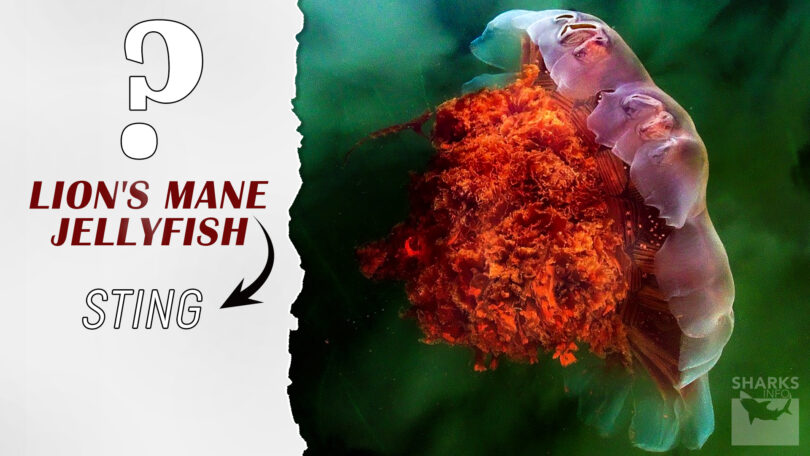The translucent bodies of jellyfish have captured the imagination of many researchers and marine enthusiasts alike. Behind their gelatinous appearance and graceful movements, a hidden danger exists – their stinging tentacles. The Lion’s Mane Jellyfish (Cyanea capillata) is top of the list which leaves people wondering about their stinging strategies. Do they sting? Let’s find out the answer.
What is a Lion’s Mane Jellyfish?
The Lion’s Mane Jellyfish is the largest jellyfish species in the world that has a bell-shaped body that can grow over 3 feet in diameter and possesses trailing tentacles that reach a length of 120 feet. They vary in color from golden brown to crimson coloration, making them an intimidating and captivating species.
What is the Anatomy of a Lion’s Mane Jellyfish Sting?
The sting of Lion’s Mane Jellyfish is equipped with stinging cells called nematocysts that they use for hunting and defense purposes. Nematocysts are microscopic capsules filled with venomous barbs that deliver a painful and dangerous sting to their prey and to those who pose potential threats to them.
How Does the Sting of Lion’s Mane Jellyfish Work?
The Lion’s Mane Jellyfish uses their sting to immobilize their prey first, then brushes the meal against the tentacles, and releases the venom into the victim. The venom consists of a mixture of toxins and proteins that paralyze the prey and allow jellyfish to reel it in and begin its meal.
Do Lion’s Mane Jellyfish Sting?
Well, the Lion’s Mane Jellyfish uses their sting primarily for hunting but they also use it for defense purposes. When creatures like humans come in contact with their tentacles, the jellyfish perceive it as a threat and sting them as a self-defense mechanism. However, the severity of their sting depends upon the size of the jellyfish and the sensitivity of the venom on the victim.
The Lion’s Mane Jellyfish Sting: What Are the Symptoms?
If a human is accidentally stung by the jellyfish, they may experience the following symptoms:
- The stinging of jellyfish feels like a burning sensation in the targeted area, which might vary from mild to moderately painful discomfort.
- The affected area becomes swollen and red, resembling a rash or hives.
- A person sensitive to venom may suffer mild nausea and vomiting.
- Many people report itching around the sting site, which can be quite irritating.
- Sometimes, muscle aches and weakness can occur as a result of the sting.
What Should You Do If a Lion’s Mane Jellyfish Stings You?
If you are stung by the Lion’s Mane Jellyfish then you should:
- Use vinegar to rinse the affected part to help eliminate any nematocysts that may still be active.
- To reduce discomfort and neutralize the venom, soak the injured region in hot water for 20 to 45 minutes.
- With tweezers, carefully remove the tentacles that could be clinging to your skin.
- Use painkillers to treat pain and lessen inflammation, such as acetaminophen or ibuprofen.
- It is best to seek medical assistance right away if the discomfort is severe.
Conclusion
The Lion’s Mane Jellyfish like other jellyfish stings and can be life-threatening, leading to severe pain, allergic reactions, or even death. Despite their stunning appearance, these magnificent creatures are merciless killers when it comes to hunting for prey or defending themselves from potential threats. With proper precautions and awareness, one may drastically lower their chance of stumbling into jellyfish.







